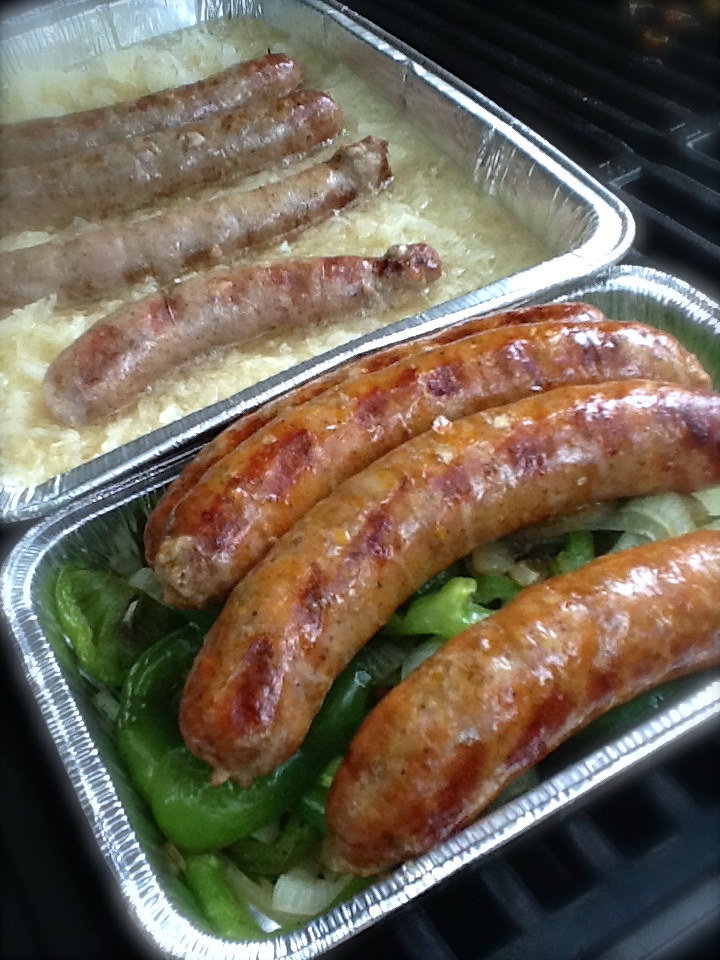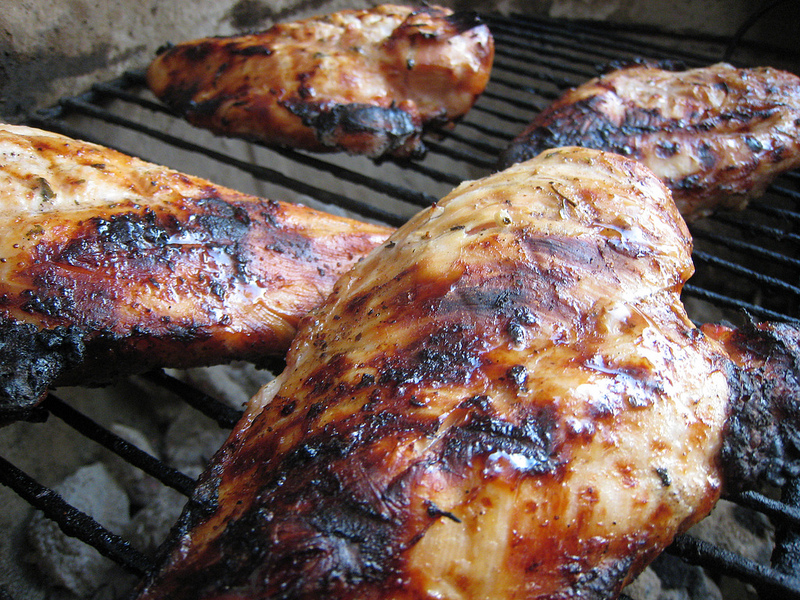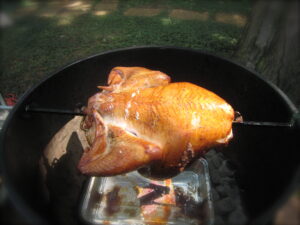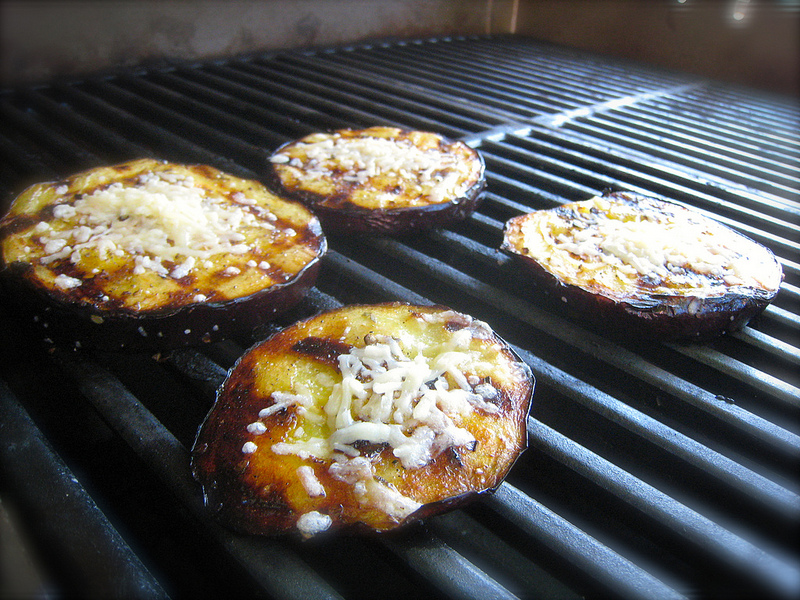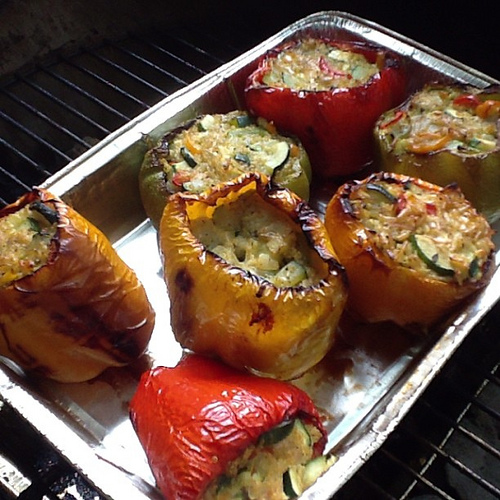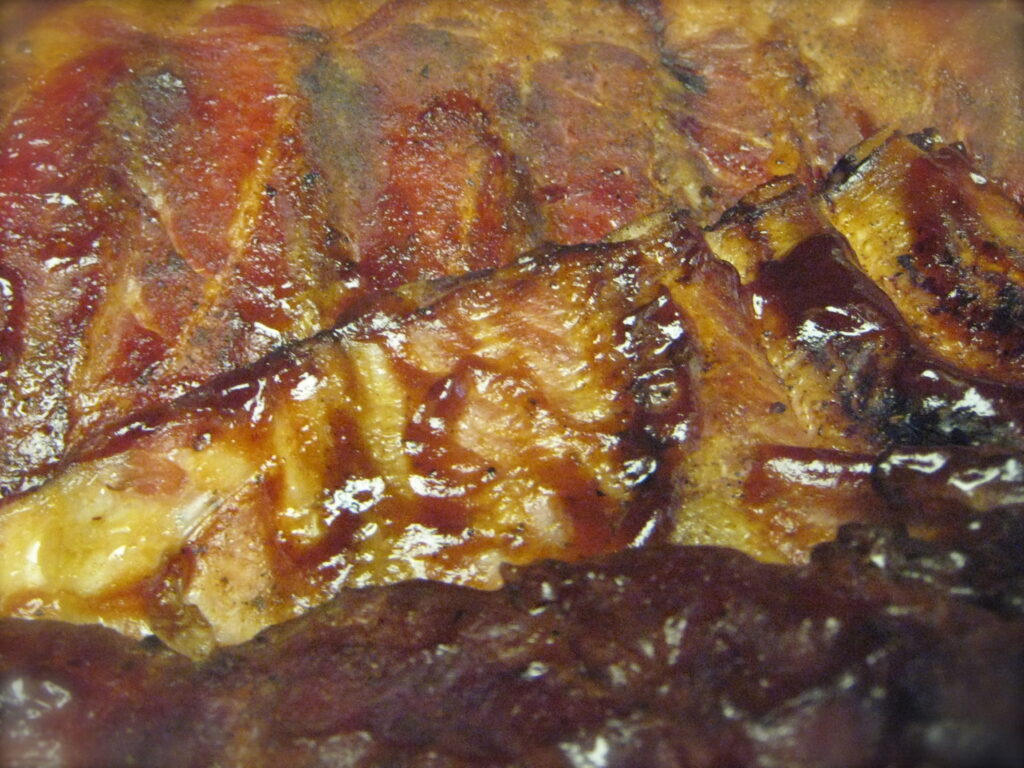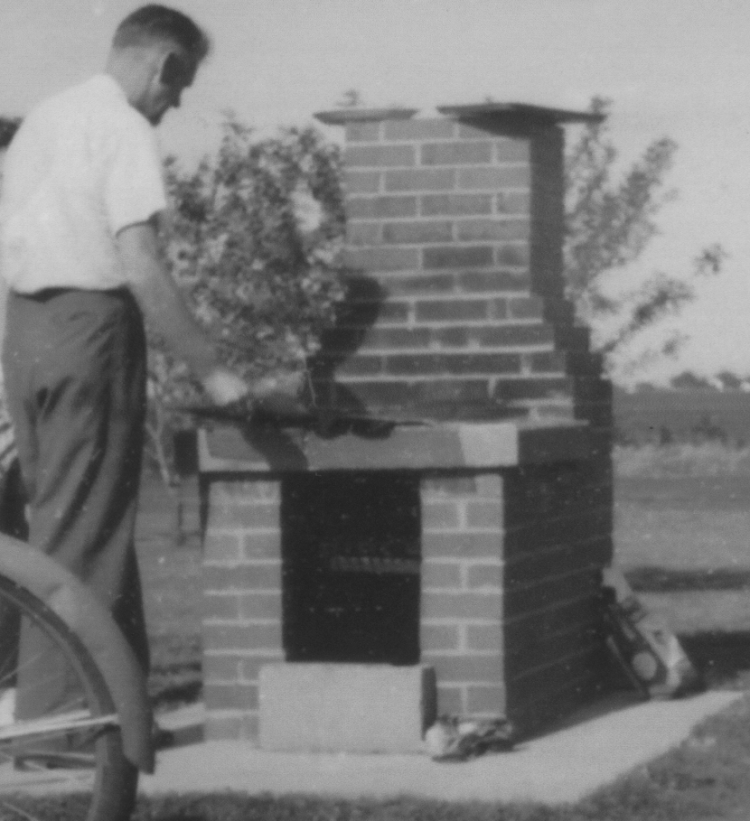
My sister sent me several pictures after reading the earlier post about my father’s barbecue. Here’s a scanned detail from one of them, showing him actually working at the grill.
She remembered “many burger cookouts as well as sometimes fish” and noted that my mom was good about pulling a cookout together when company came.
Based on some of the other details in the full photo, I would suspect that this was taken in 1957 or 1958.
